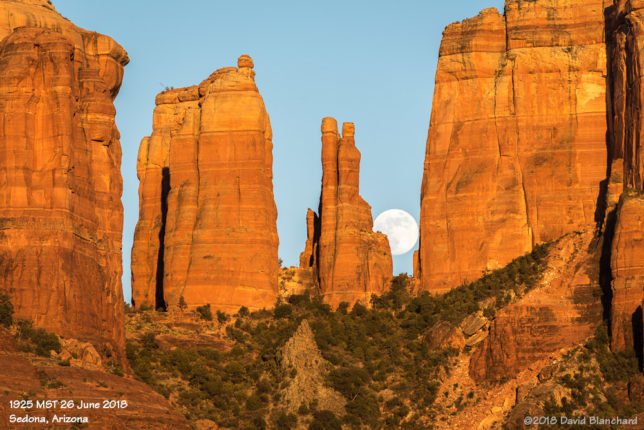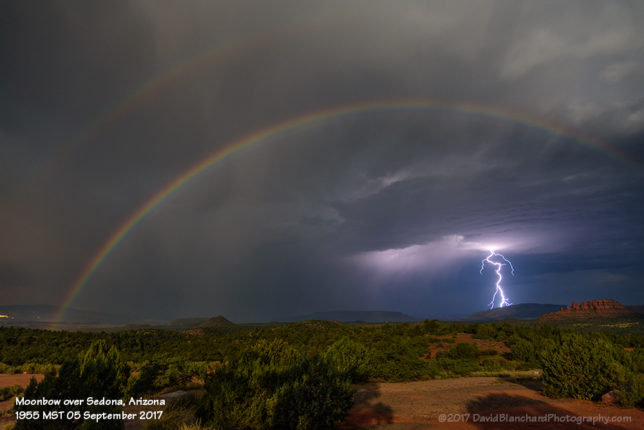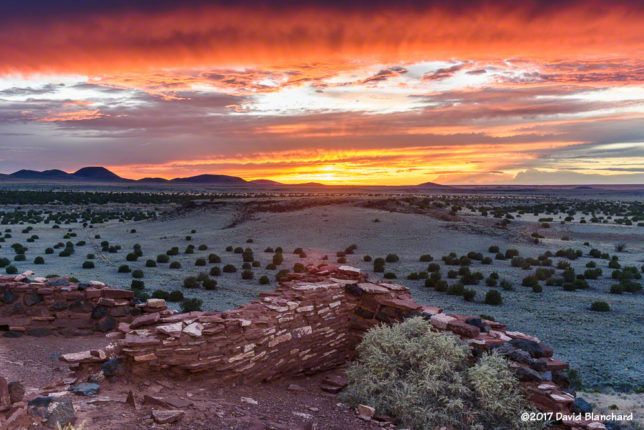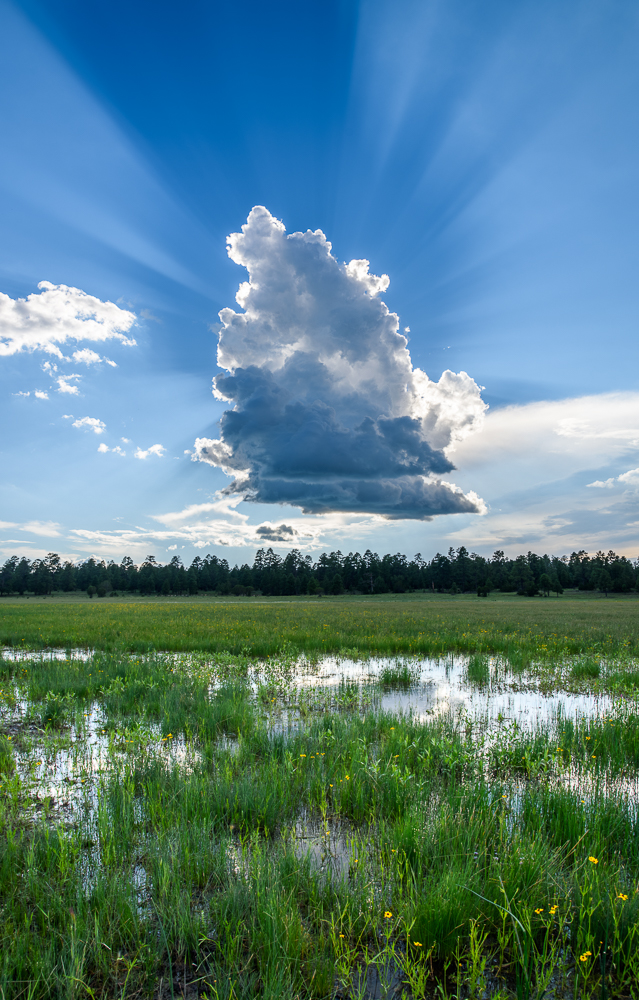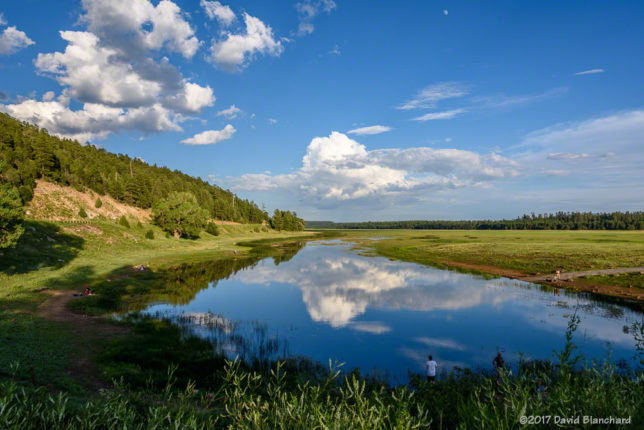Here are two images that are about the Moon.
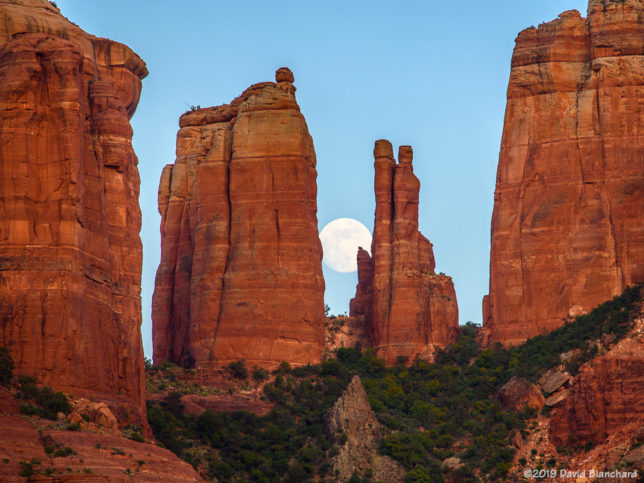
The first image shows the full Moon rising behind Cathedral Rock. The day before Full Moon is a preferred time to shoot this type of image since the setting sun still throws a bit of light on the rock. Didn’t work this time as there were clouds in the west blocking the sun. Last month it was the other way around: clouds blocked the Moon but the Sun cast beautiful light on the rocks. Still, I like the way the Moon is framed between the pillars of Cathedral Rock.
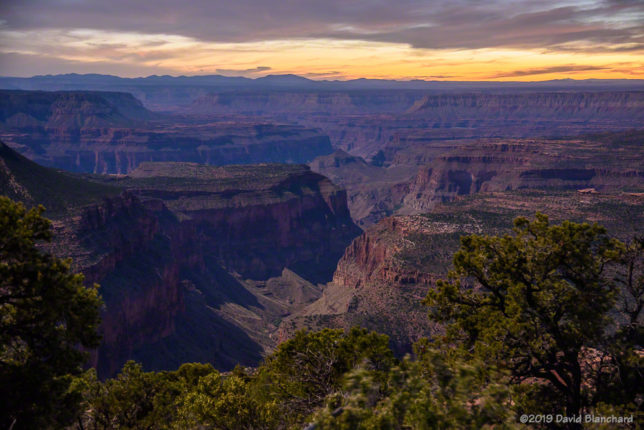
The second image does not show the Moon but rather the light it casts upon the Grand Canyon. The Sun had set and fading sunset colors were still visible low on the western horizon. The first-quarter Moon was throwing plenty of light into Grand Canyon and casting long shadows. This was a long exposure of 30 seconds (f/4, ISO 800, 50mm) so one of the trees in the foreground shows a bit of thrashing from the evening breezes at Timp Point on the west side of the Kaibab Plateau.
